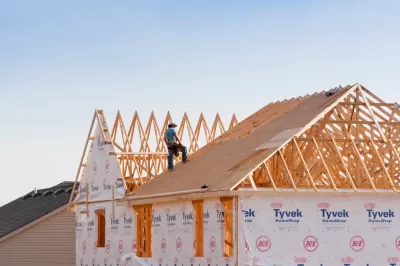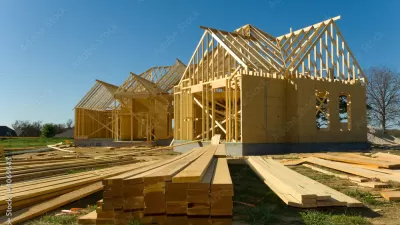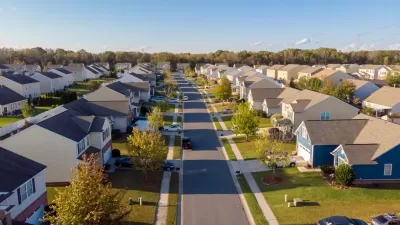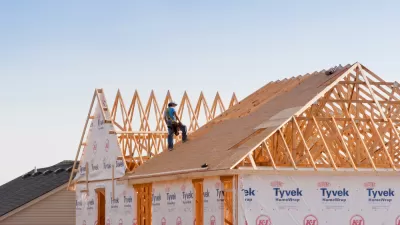The history of U.S. housing construction has traditionally been the story of many companies building a few homes a year. Now two companies alone are out-building the rest of the top ten homebuilders combined.

The history of U.S. housing construction has traditionally been the story of many companies building a few homes a year. Now two companies alone are out-building the rest of the top ten homebuilders combined.
Gopal Ahluwalia, Kermit Baker, and Kent Colton write for the Joint Center for Housing Studies of Harvard University to examine trends in the housing construction industry. The headlining finding of the report: a few homebuilders are responsible for the vast majority of new homes sold in the United States, with two companies in particular, Lennar and D.R. Horton, cornering more and more of the homebuilding industry.
In a new working paper titled “Concentration in the Homebuilding Industry: Trends, Strategies, and Prospects,” the researchers find that “[t]he 100 largest home builders in the US now account for about half of all new single-family home sales, up from just over a third two decades ago.” That market summary comes with a significant caveat: two companies, D.R. Horton and Lennar “were responsible for almost two-thirds of the gain in market share among the top 100 builders from 2002 to 2020.”
“As a result of this growth, these two firms now build more homes than the combined total of the nation’s third to tenth largest home builders,” add the authors. The trends are noteworthy, because “the homebuilding industry has traditionally been one of the most fragmented industries in the US economy.”
The source article, linked below, includes more data and infographics to introduce the working paper.
FULL STORY: CONCENTRATION IN HOMEBUILDING DRIVEN BY A FEW LARGE BUILDERS

Maui's Vacation Rental Debate Turns Ugly
Verbal attacks, misinformation campaigns and fistfights plague a high-stakes debate to convert thousands of vacation rentals into long-term housing.

Planetizen Federal Action Tracker
A weekly monitor of how Trump’s orders and actions are impacting planners and planning in America.

In Urban Planning, AI Prompting Could be the New Design Thinking
Creativity has long been key to great urban design. What if we see AI as our new creative partner?

Florida Seniors Face Rising Homelessness Risk
High housing costs are pushing more seniors, many of them on a fixed income, into homelessness.

Massachusetts Budget Helps Close MBTA Budget Gap
The budget signed by Gov. Maura Healey includes $470 million in MBTA funding for the next fiscal year.

Milwaukee Launches Vision Zero Plan
Seven years after the city signed its Complete Streets Policy, the city is doubling down on its efforts to eliminate traffic deaths.
Urban Design for Planners 1: Software Tools
This six-course series explores essential urban design concepts using open source software and equips planners with the tools they need to participate fully in the urban design process.
Planning for Universal Design
Learn the tools for implementing Universal Design in planning regulations.
Gallatin County Department of Planning & Community Development
Heyer Gruel & Associates PA
JM Goldson LLC
City of Camden Redevelopment Agency
City of Astoria
Transportation Research & Education Center (TREC) at Portland State University
Jefferson Parish Government
Camden Redevelopment Agency
City of Claremont





























